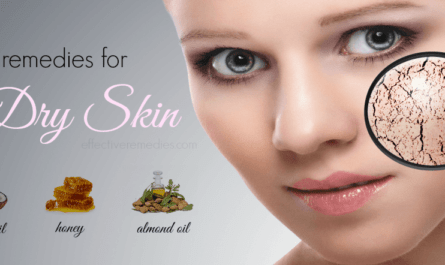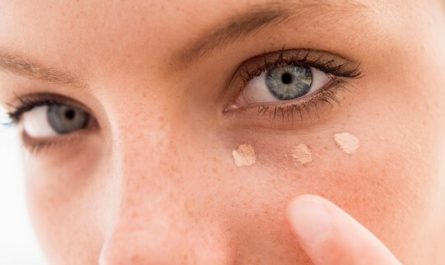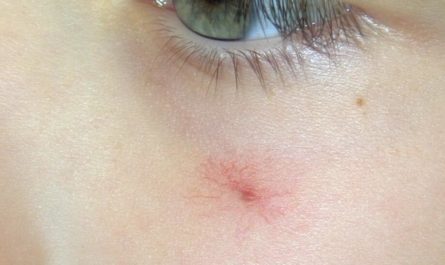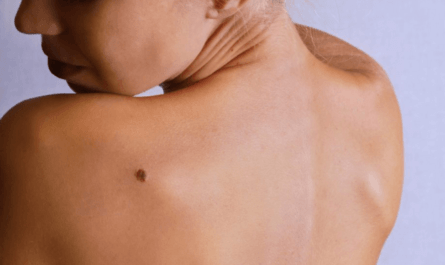Itchy armpits or underarms can be an annoying and embarrassing problem. That relentless urge to scratch your pits is often caused by nothing more than a new deodorant or laundry detergent irritating the sensitive skin in that area. However, in some cases, persistently itchy underarms can be a sign of an underlying skin condition or even certain types of cancer. If you’re wondering why your armpits are so itchy, here are 12 of the most common causes of itchy underarms, along with natural remedies.
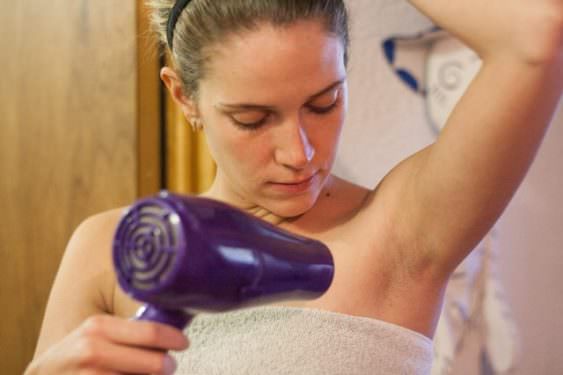
Common Causes of Itchy Armpits
Itchy armpits can arise from multiple factors, ranging from minor irritations to more serious underlying conditions.
1. Poor Hygiene
One of the most common and easily preventable causes of itchy armpits is poor hygiene. The underarm area is a warm, moist environment that’s prone to sweat and bacterial buildup. When these substances accumulate, they can lead to irritation, itching, and even unpleasant odors.
To prevent this, it’s crucial to maintain good hygiene habits by washing your armpits daily with a gentle, fragrance-free soap and water. Be sure to dry the area thoroughly afterward to prevent moisture from lingering.
2. Deodorants and Antiperspirants
Ironically, the very products designed to keep your underarms fresh and dry can sometimes be the culprits behind itchy armpits. Many deodorants and antiperspirants contain harsh chemicals, fragrances, and other ingredients that can irritate sensitive skin. Aluminum-based compounds are commonly used in antiperspirants to block sweat glands. This can be particularly problematic for some individuals.
If you suspect your deodorant or antiperspirant is the cause of your itchy armpits, try switching to a gentler, fragrance-free formula or a natural alternative like baking soda or coconut oil. You can also look for products labeled as “hypoallergenic” or “sensitive skin” to minimize the risk of irritation.
3. Shaving
Shaving your underarms can also contribute to itchy armpits, especially if you have sensitive skin. The act of shaving can cause razor burns, ingrown hairs, and small cuts, all of which can lead to irritation and itching.
To minimize this, always use a sharp, clean razor and shave in the direction of hair growth. Applying a moisturizing lotion or aloe vera gel after shaving can also help soothe the skin and prevent further irritation.
If you experience frequent ingrown hairs or severe irritation from shaving, you may want to consider alternative hair removal methods like waxing, epilating, or laser hair removal. These methods can be more expensive and potentially painful. But they may provide a longer-lasting solution for those with particularly sensitive underarms.
4. Heat Rash
During hot and humid weather, heat rash, also known as prickly heat or miliaria, is a common cause of itchy armpits. This condition occurs when sweat ducts become blocked and sweat gets trapped under the skin, leading to a red, bumpy, and itchy rash.
To prevent heat rash, it’s important to wear loose, breathable clothing that allows proper air circulation and sweat evaporation. Staying cool and dry by using air conditioning or fans can also help.
If you do develop a heat rash, applying a cold compress or calamine lotion can provide temporary relief from the itching. However, if the rash persists or worsens, it’s best to seek medical attention.
5. Fungal Infections
Fungal infections like candidiasis (yeast infection) and tinea corporis (ringworm) can also cause itchy, red, and scaly patches in the underarm area. These infections thrive in warm, moist environments, making the armpits a prime target.
Candidiasis is often characterized by red, itchy rashes with satellite lesions. While ringworm typically presents as a circular, red, and scaly rash with a raised border.
Antifungal creams or powders containing ingredients like clotrimazole, miconazole, or terbinafine can help clear up these infections. However, it’s important to see a doctor for proper diagnosis and treatment, as some fungal infections may require oral antifungal medications or other therapies.

6. Bacterial Infections
In addition to fungal infections, certain bacterial infections can also cause itchy armpits. Erythrasma, for example, is a chronic skin condition caused by the bacteria Corynebacterium minutissimum.
It often appears as well-defined, reddish-brown patches in the armpits, groin, or other skin folds. Another bacterial infection, trichomycosis axillaris, is characterized by red, itchy bumps or lesions in the armpit area.
Antibacterial soaps, creams, or oral antibiotics may be necessary to treat these infections effectively. Your doctor may also recommend keeping the affected area clean and dry to prevent further bacterial growth.
7. Contact Dermatitis
Contact dermatitis is a type of skin inflammation caused by an allergic or irritant reaction to a substance that comes into contact with the skin. In the case of itchy armpits, this could be due to a new deodorant, laundry detergent, fabric softener, or clothing material containing harsh chemicals or dyes.
If you suspect contact dermatitis, try to identify and avoid the triggering substance. Applying a cold compress or over-the-counter hydrocortisone cream can help relieve the itching and inflammation. However, if the symptoms persist or worsen, it’s important to seek medical attention.
8. Atopic Dermatitis (Eczema)
Atopic dermatitis, also known as eczema, is a chronic skin condition that can cause itchy, red, and dry patches of skin. While eczema can affect any part of the body, it commonly occurs in the creases of the elbows and knees, as well as the armpits. The exact cause of eczema is unknown, but it’s believed to be related to a combination of genetic and environmental factors.
Managing eczema involves identifying and avoiding triggers, such as certain foods, stress, or environmental irritants. Moisturizing the skin regularly with fragrance-free creams or ointments can help prevent dryness and itching. In more severe cases, your doctor may prescribe medicated creams or ointments to control inflammation and itching.
9. Psoriasis
Psoriasis is another chronic skin condition that can cause itchy, scaly patches in the underarm area. These patches are often red, silvery, and raised, and can be painful or sore to the touch. Psoriasis is an autoimmune disorder that causes the rapid buildup of skin cells. This leads to the formation of these characteristic plaques.
While there is no cure for psoriasis, various treatments can help control the symptoms and prevent flare-ups. Topical creams or ointments containing corticosteroids, and vitamin D analogs. This can help reduce inflammation and slow down skin cell growth. In more severe cases, your doctor may recommend light therapy, oral medications, or biologic drugs to manage the condition.
10. Intertrigo
Intertrigo is a rash that occurs in the folds of the skin, such as the armpits, groin, and under the breasts. It is caused by a combination of factors, including friction, moisture, and a lack of air circulation, which can lead to irritation, itching, and sometimes infection.
Keeping the affected area clean and dry is essential for managing intertrigo. Wearing loose, breathable clothing and applying a barrier cream or powder can help reduce friction and moisture buildup. If the rash becomes infected, your doctor may prescribe topical or oral antibiotics to clear the infection.

11. Nerve Disorders
In some cases, itchy armpits may be a symptom of an underlying nerve disorder like multiple sclerosis, shingles, or brachioradial pruritus. These conditions can cause itching, tingling, or burning sensations in various parts of the body, including the underarms.
Multiple sclerosis is an autoimmune disease that affects the central nervous system, while shingles are caused by the reactivation of the varicella-zoster virus. Brachioradial pruritus, on the other hand, is a condition characterized by intense itching in the arms and shoulders, often without any visible skin changes.
If you experience persistent itching along with other neurological symptoms, such as numbness, weakness, or vision problems, it’s important to see a doctor.
12. Cancer
While it’s rare, itchy armpits can sometimes be a sign of cancer, particularly Hodgkin’s lymphoma, non-Hodgkin’s lymphoma, or skin cancer. These types of cancer can cause swollen lymph nodes in the armpit area. This can lead to itching and discomfort.
Other symptoms that may accompany itchy armpits in the case of cancer include unexplained weight loss, fever, night sweats, and the appearance of new lumps or growths. If you have any of these symptoms along with persistent underarm itching, it’s crucial to see a doctor right away for further evaluation and testing.
Home Remedies for Itchy Armpits
If you are interested in trying using home remedies to get rid of the itch on your armpits, here are some of the treatments that you can try:
1. Cold Compress
A cold compress is one of the simplest and most effective remedies for itchy armpits. Take a clean cloth or towel, soak it in cold water, and apply it to the affected area.
The cold temperature helps reduce inflammation and soothes the itchiness. Leave the compress on for a few minutes and repeat as needed throughout the day.
2. Aloe Vera Gel
Aloe vera gel is a natural moisturizer with soothing properties that can relieve itchy armpits. Extract fresh gel from an aloe vera leaf and apply it directly to the affected area.
Leave it on for 15-20 minutes before rinsing off with lukewarm water. Repeat this process twice daily for best results.
3. Coconut Oil
Coconut oil is known for its moisturizing and anti-inflammatory properties, making it an excellent remedy for itchy armpits.
Gently massage a small amount of coconut oil onto the affected area. Leave it on for about 30 minutes to allow the skin to absorb the oil. Rinse off with mild soap and water. Apply coconut oil twice daily for effective relief.
4. Tea Tree Oil
Tea tree oil possesses antibacterial and antifungal properties, which can help alleviate itchiness caused by fungal infections or bacterial overgrowth.
Dilute a few drops of tea tree oil with a carrier oil, such as coconut or olive oil, and apply it to the itchy armpits. Leave it on for 20-30 minutes before washing it off. Use this remedy once daily until the itchiness subsides.
5. Bakingf reducingBaking Soda
Baking soda can act asworseningfoliant and help relieve itchy armpits caused by dead skin cells or sweat buildup. You can make a paste by mixing equal parts of baking soda and water.
Apply the paste to the affected area and gently massage in circular motions for a few minutes. Rinse off with water and pat dry. Use this remedy twice a week for optimal results.
6. Apple Cider Vinegar
Apple cider vinegar has antimicrobial properties that can help combat the underlying causes of itchy armpits, such as fungal or bacterial infections.
You can dilute apple cider vinegar with equal water and apply it to the affected area using a cotton ball. Let it dry naturally and rinse off with water. Repeat this process once daily until the itchiness subsides.
7. Oatmeal Bath
An oatmeal bath can provide instant relief from itchy armpits and soothe the skin. Fill your bathtub with lukewarm water and add a cup of finely daily until the rash disappears bath for 15-20 minutes, gently rubbing the oatmeal paste onto the armpits. Rinse off with clean water and pat dry. Enjoy this soothing bath once or twice a week.
8. Witch Hazel
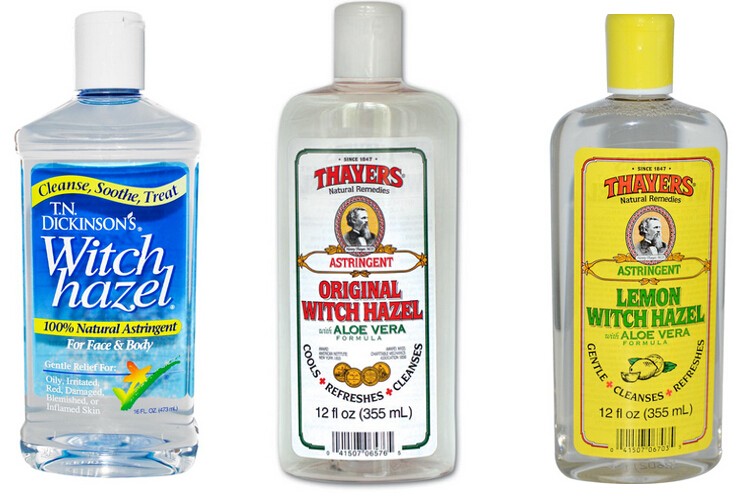
Witch hazel is a natural astringent that can help relieve itching and inflammation. Soak a cotton ball in witch hazel and apply it to the itchy armpits. Leave it on for a few minutes before rinsing off with water. Skin inflammation times a day until the itchiness improves.
9. Calamine Lotion
Calamine lotion is a popular over-the-counter remedy for itchy skin conditions, including itchy armpits.
You can apply a thin layer of calamine lotion to the affected area and allow it to dry naturally. Reapply as needed throughout the day to relieve itching and discomfort.
10. Neem Oil
Neem oil has antifungal and antibacterial properties, making it an effective remedy for itchy armpits caused by fungal infections or bacterial overgrowth.
You can dilute neem oil with carrier oil and apply it to the affected area. Leave it on for 30 minutes before rinsing off. Repeat this process once daily until the itchiness subsides.
11. Turmeric Paste
Turmeric is a natural anti-inflammatory and antimicrobial spice that can help reduce itching and soothe the skin. Make a paste by mixing turmeric powder with water or coconut oil.
Apply the paste to the itchy armpits and leave it on for 20-30 minutes. Rinse off with water and pat dry. Use this remedy twice a week for optimal results.
12. Stay Hydrated
Proper hydration is essential for maintaining healthy skin and preventing dryness, which can contribute to itchy armpits. Drink adequate water throughout the day to keep your body hydrated from within.
You can also include hydrating foods like watermelon, cucumber, and oranges in your diet to promote overall skin health.
How to Prevent Itchy Armpits?
To prevent itchy armpits, you can try the following measures:
- Keep the armpits clean: Regularly wash your armpits with a mild soap or gentle cleanser to remove sweat, bacteria, and dirt that can cause itching.
- Practice good hygiene: After washing, thoroughly dry your armpits to prevent moisture buildup, which can contribute to itching. Consider using a clean towel or a hairdryer on a low setting.
- Avoid harsh products: Some deodorants, antiperspirants, and laundry detergents contain harsh chemicals that may irritate the skin. Opt for mild or fragrance-free products specifically formulated for sensitive skin.
- Wear breathable clothing: Choose loose-fitting natural cotton or linen clothes that allow air circulation and minimize sweating. Avoid tight clothing that can trap moisture and heat, leading to itchiness.
- Shave carefully: If you shave your underarms, gently avoid irritating the skin. Use a clean, sharp razor and shaving cream or gel to lubricate the area. Shave in the direction of hair growth to minimize irritation.
- Moisturize the skin: Apply a hypoallergenic and fragrance-free moisturizer to your armpits after washing to keep the skin hydrated and prevent dryness, which can lead to itching.
- Avoid allergens: Identify and avoid any substances that may trigger an allergic reaction in your armpits, such as certain fabrics, detergents, or ingredients in personal care products.
- Maintain a healthy weight: Excess weight can contribute to friction and irritation in the armpit area. Aim for a healthy weight through a balanced diet and regular exercise.

